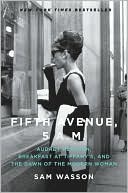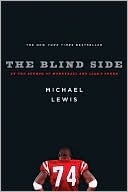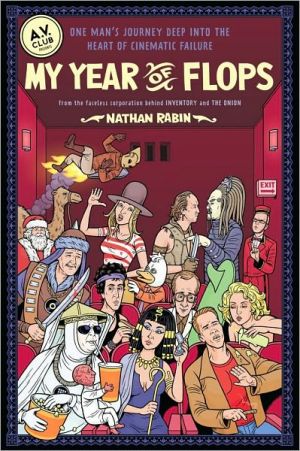Beauty of the Beasts: Tales of Hollywood's Wild Animal Stars
THE BEAUTY OF THE BEASTS is a chronicle of many years Ralph Helfer spent as a Hollywood animal behaviorist, and is full of behind–the–scenes accounts of the many television programs and films in which Helfer's animals appeared, including Charlie's Angels and The Ten Commandments, and the stars he and his animals worked with such as Elvis Presley, Clint Eastwood, and Marilyn Monroe. But this is more than a story of the famous, both four and two–legged –– it's also about the important roles...
Search in google:
THE BEAUTY OF THE BEASTS is a chronicle of many years Ralph Helfer spent as a Hollywood animal behaviorist, and is full of behind–the–scenes accounts of the many television programs and films in which Helfer's animals appeared, including Charlie's Angels and The Ten Commandments, and the stars he and his animals worked with such as Elvis Presley, Clint Eastwood, and Marilyn Monroe. But this is more than a story of the famous, both four and two–legged –– it's also about the important roles animals play in our lives, and how much less human we would be without them. Library Journal Helfer has provided an interesting insight into the training and use of animals in motion pictures. His anecdotes are interesting and humorous, and his devotion to animals is evident throughout. The book's only major defect is the author's repeated references to the animals' love for him and his family. This anthropomorphism is handled somewhat differently than in Hope Ryden's Lily Pond (LJ 9/1/89) in that Helfer admits that these animals are being held in non-native environments and humans owe them more consideration because of this. He also discusses the other method of animal training based on the animal's fear of its trainer, but he does not actually explore this mistreatment issue. Interesting for general readers.-- Mary J. Nickum, Fish & Wildlife Reference Svce., Bethesda, Md.
PROLOGUE\ On one of my many visits to Africa, I spent an afternoon visiting with one of the world's foremost exporters of wild animals. With my lion Rafiki (which is Swahili for "friend") half asleep at my feet, we sat on a veranda sipping sundowners, watching a flock of marabou storks settling into the nearby yellow fever trees at the foot of Kilimanjaro.\ But in spite of the peaceful vistas in front of us, the atmosphere on the porch was tense. I had just won a six-figure contract to supply a full-grown African lion for an upcoming film. At that time I had the only animals in the world who were qualified to perform the full range of actions required by this particular script.\ My host had lost the contract due to his method of training--a method that was widespread in the industry at the time. Like many other trainers, he firmly believed that lions had to be worked with a strong hand, which meant that the constant threat of physical abuse was used to dominate the animal. While this method was effective for many animal acts, it was not safe when physical contact between an animal and a performer was involved. Whenever a movie scene called for a hands-on approach with a mature lion, for example, directors were forced to use one of several options. For some scenes, a mechanical lion could be built, allowing the actors to work closely with the "animal" without danger. For attack scenes, a young animal--sometimes wearing a fake mane--could be substituted. Or, in moments of desperation, a taxidermied animal could be thrown or launched at the actor, who would fall to the ground, stabbing the dummy until the stuffing flew out and the director yelled, "Cut!" (In suchscenes, the greatest danger was that of being knocked out by the hurtling stuffed animal!)\ Before the studio located my lion, in fact, they had been having a replica of a lion built in Germany for the scenes in which the use of a live animal would endanger the actor. Once they found my uniquely trained lion, they stopped building the replica, since everything could now be filmed using a live, mature lion.\ My host was eager to know what techniques I was using to control my animal. He assumed that I was using some type of drug that made the animal tractable. He was suspicious of my animals, and he was equally suspicious of me. Being of the old school, he believed that the more scars one had, the more marks of distinction one had earned as a trainer.\ "Look at Joe," he said, beckoning his chief trainer to come over to where we were sitting. He grabbed Joe's right arm. "Two fingers missing to a tough old leopard. And how about this one?" he continued, rolling up his own pant leg. A deep scar ran from his knee back to the middle of his calf. "This lion damn near killed me!" he bragged. "What about you, Ralph? What do you have to show for it?"\ I shrugged, unwilling to enter that competition. It was true that in the beginning of my career as a stuntman and wild-animal trainer, I had been clawed by lions, attacked by bears, bitten by poisonous snakes, and nearly suffocated by pythons. But that had been when I was handling animals the same way that he did.\ "Since I discovered affection training, I have nothing to show," I said. "Not a scratch."\ My host snorted in disbelief. "Affection what?"\ I wasn't exactly surprised by his reaction; my peers in the States had been equally hostile.\ "Affection training. Instead of dealing with my animals physically, I deal with them emotionally. I know this is going to sound crazy to you, but I use love, patience, understanding, and respect to get my animals to perform."\ My host and his trainer exchanged smug looks. Just then, the maid brought us out a dinner tray of steak sandwiches and drinks. At the smell of food, Rafiki stretched, yawned, and rose to his feet. Without being conscious of it, my host drew his injured leg in closer to him, away from the lion. The topic shifted to the poaching problems plaguing Africa.\ Midway through the meal I casually slipped a thick piece of rare steak to Rafiki, who carefully took it from my hand and then lay down to savor it.\ The entire scene was not lost on my host, who was amazed by Rafiki's eating cooked meat, as well as by his gentleness. He knew that he could never do that with any of his own lions.\ At sunset I loaded Rafiki into the backseat of the Land Rover and we took off, with the lion's majestic head sticking up through the open sunroof.\ On the ride back to our location site I reflected on the meeting. I knew my host had been impressed, not with what I had said, but with what he had seen. Perhaps he wouldn't change his way of training animals, but others surely would.\ In the years to follow, my affection-training approach to working with animals revolutionized the way in which wild animals could be handled. The old method of fear training was not humane, and animals trained this way were dangerous to work with. In contrast, affection training is highly humane and extremely safe. Performances that would previously have been impossible were now regular occurrences, and the possibilities were limited only by the imagination.\ For the first time, a person could handle full-grown bears and leopards safely, a child could ride on a tiger's back, and a lion could really lie down with a lamb! In many ways, the "peaceable kingdom" had become a reality.
\ Library JournalHelfer has provided an interesting insight into the training and use of animals in motion pictures. His anecdotes are interesting and humorous, and his devotion to animals is evident throughout. The book's only major defect is the author's repeated references to the animals' love for him and his family. This anthropomorphism is handled somewhat differently than in Hope Ryden's Lily Pond (LJ 9/1/89) in that Helfer admits that these animals are being held in non-native environments and humans owe them more consideration because of this. He also discusses the other method of animal training based on the animal's fear of its trainer, but he does not actually explore this mistreatment issue. Interesting for general readers.-- Mary J. Nickum, Fish & Wildlife Reference Svce., Bethesda, Md.\ \ \ \ \ School Library JournalEveryone's heard the adage ``you can catch more flies with honey''; Helfer demonstrates it as he recounts his affectionate training method for wild animals, a method predicated on love, patience, understanding, and respect. Although his animal adventures illustrate the success of his training philosophy, his love for his animals permeates every aspect of his writing. Laughter and tears go side by side in this book. Readers will howl with merriment at the description of a trip along a California freeway with Helfer and an overheated bear sharing the back seat of a new car driven by a friend who hates animals. They'll weep at the description of an elephant that had been chained to a tree through 20 years of hot summers and cold winters in Vermont. Story after story will hold readers enthralled in this celebration of animals. This is the book to recommend to those who have loved James Herriot, Cleveland Amory, or Lillian Braun. --Pam Spencer, Jefferson Sci-Tech, Alexandria, VA\ \








